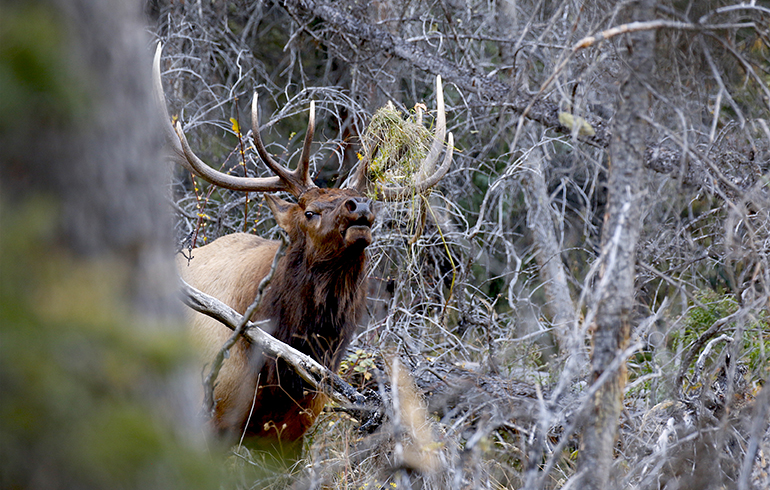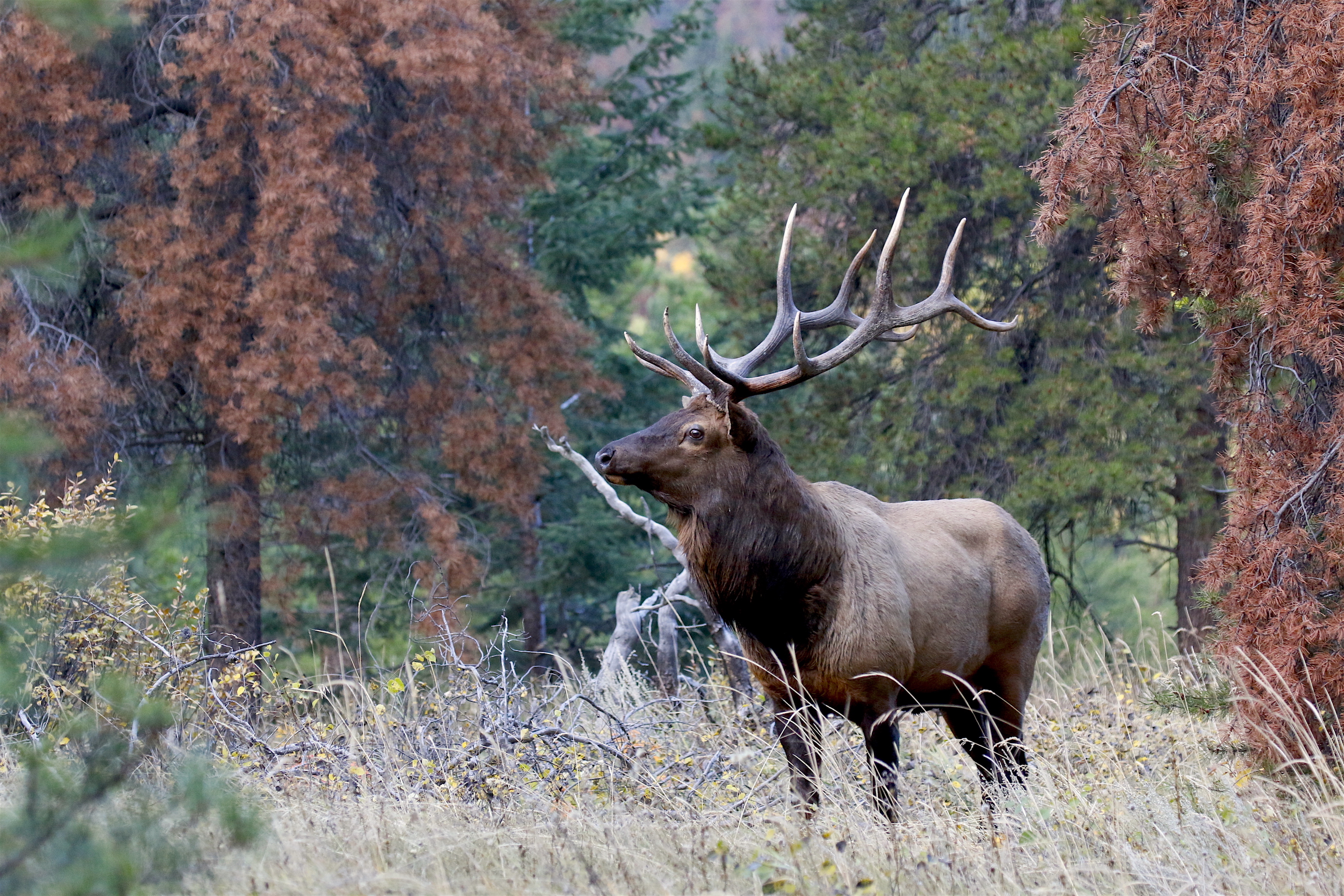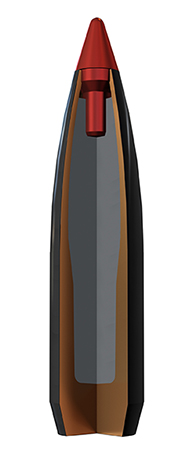338 Win Mag – the Ultimate Elk Round
Many centerfire rifle cartridges are effective on elk. The 338 Winchester Magnum is arguably the best.
Ever since the advent of the first metallic cartridge (the 22 BB Cap in 1845,) hunters have demanded rifles, cartridges and bullets capable of terminating everything from ground squirrels to elephants. This is why the world has seen the creation of — literally — hundreds of rifle cartridges.

Most have never seen commercial production, but the 338 Win. Mag. has. Since Winchester introduced it in 1958, this belted magnum round has slowly but steadily proven itself as the best balance between shootability and lethal terminal performance of any current production cartridges employed in elk habitat.

That, of course, is just my opinion, but I don’t think I’m alone in it. Throwing 200- to 225-grain bullets 2,950 to 2,800 fps, the 338 Win. Mag. churns out the kind of kinetic energy that makes an elk lie down and take notice, yet not so much recoil that it makes elk hunters flinch in anticipation. Zeroed at 200 yards, those powerful slugs drop little more than a 180-grain bullet from the 300 Win. Mag. Let’s pry into the history and performance of the 338 Win. Mag. to fully appreciate this outstanding big game round.
Like its close cousins the 264 Win. Mag., 300 Win. Mag., and 458 Win. Mag., Winchester’s 338 magnum sprang from the 375 H&H Magnum case of 1912. Winchester’s idea was to modify this long, belted, magnum case so it would function in the Model 70’s 30-06-length “standard length action,” yet provide more powder capacity than the 30-06 Springfield by way of its larger diameter. Engineers shortened the 375 brass from 2.85-inches to 2.5-inches, took much of the taper out of its body, squeezed its neck down to hold a .338-inch diameter bullet, and shaped a 25-degree shoulder to blend the two. They ended up with a potent looking container that would hold 86 grains of water and more than enough powder to get the job done.
Initially Winchester loaded its new 338 magnum with 200-grain, 250-grain and 300-grain bullets. Today’s selection includes 200-grain Power Point, 200-grain Power Max Bonded and 200-grain E-Tip bullets plus a 225-grain AccuBond CT. The lighter bullets reduce recoil and work well on lighter game like deer, caribou and black bear. The 225-grain is my pick for elk, moose, grizzlies and Africa’s bigger antelope.
Thanks to its superior construction and materials, the 225-grain AccuBond CT has proven tough enough to equal the penetration of much heavier 20th century bullets. Its sleek, aerodynamic shape helps it retain more downrange energy than the older designs, too. The result is delivery of 3,918 foot-pounds energy at the muzzle and 2,052 foot-pounds clear out at 500 yards. If you subscribe to the theory that an elk requires at least 2,000 foot-pounds of punch for a clean kill, the 338 Win. Mag. is a legitimate 500-yard elk rifle. If you believe, as many do, that 1,500 foot-pounds is more than sufficient, you’ve got the horsepower needed clear out to 700 yards.
Drop and drift are equally impressive. With a 200-yard zero, the 225-grain AccuBond CT load will drop only about 7.4 inches at 300 yards. That zero means your mid-range trajectory peak will be less than +2 inches at 150-yards, suggesting you could zero at 250 yards and easily keep mid-range trajectory under +3.4 inches at 150 yards. That would result in a 300-yard drop of just 4 inches and a 400-yard fall of less than 17 inches. A 10 mph right angle wind would deflect that bullet just 6 inches at 300 yards, 11 inches at 400 yards.
Those numbers are within an inch or less of the highly respected 300 Win. Mag., and with that difference you aren’t likely to miss an elk.
In rifles weighing 9-pounds, the 225-grain 338 Win. Mag. load will recoil with about 30.2 foot-pounds of free recoil energy at a velocity of 14.7 fps. The 180-grain 300 Win. Mag. load in the same weight rifle will come back with 24.3 foot-pounds at 13.2 fps. The difference that matters to elk hunters — as well as moose and bear hunters — is the 300 foot-pounds more energy the 338 Win. Mag. retains at 500 yards.
If you want a magnum that functions in reasonably sized, sporter-weight rifles, yet hits more like rounds typically chambered for much larger, heavier, long-magnum rifles, the 338 Winchester Magnum is your huckleberry.





